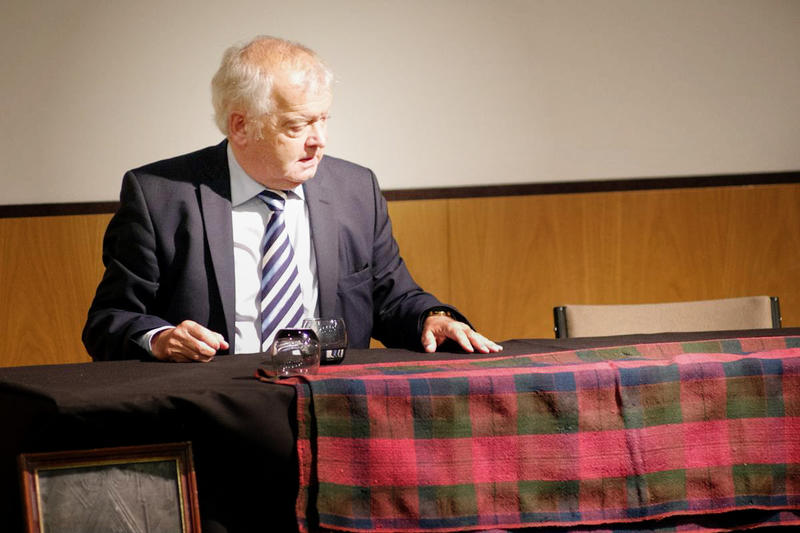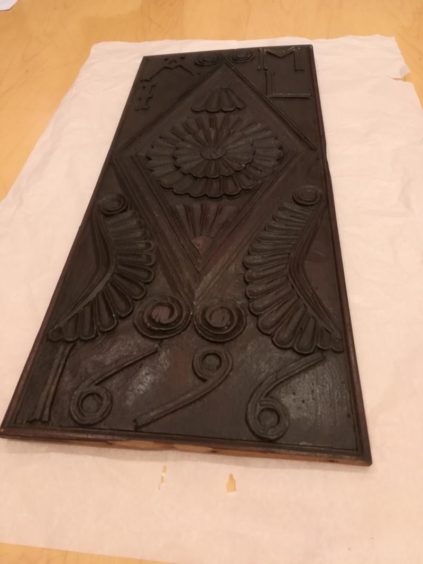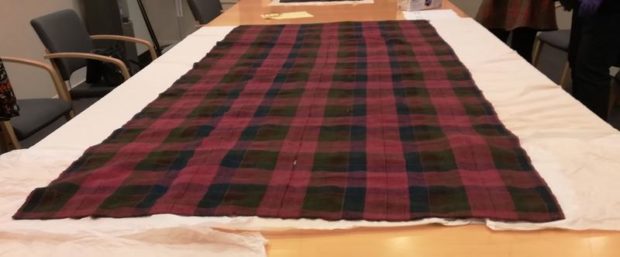A piece of plaid worn by one of the men who fought in the Battle of Culloden has been donated to the National Museum of Scotland.
The ancient tartan was worn by John Moir in the 1746 battle.
Now his ancestor Heather Turner, who lives in Cheshire, has donated the piece to the museum after researching its history.
She also gifted a carved oak pew panel, dated 1696, which originally came from a church in Logie Coldstone in Aberdeenshire.
Mrs Turner has been carrying out research into the artefacts, which were described as being “of national importance” by renowned Scottish historian Sir Tom Devine.

Mrs Turner arranged a meeting with the National Museum of Scotland last month and has subsequently handed over the items to Anna Groundwater, the principal curator in Renaissance and Early Modern History.
She recalled a piece about the plaid – which remains in very good condition – which was carried in the Press and Journal in 1901.
Mrs Turner said: “I am fascinated by these artefacts and they go back hundreds of years in the history of my family.
“There are links to the Moir family and the Skeens of Tarland and I have spent many happy times in the north-east, including places like Stonehaven, so I thought it was important that the plaid and the oak panel were given back to Scotland.

“The museum has told me that they will look after the two pieces and make sure they are preserved for future generations, which means a lot to me and my family.
“They are available to view in the National Museum of Scotland archives and they will eventually go on display to the public in a gallery.”
Ms Groundwater said: “This is a wonderful addition to the national collection, and we are extremely grateful to Mrs Turner for her generous donation.
“Few textiles survive from the period, both of this quality and in such fine condition.
“What makes this even more special as an acquisition is the fact that it is an important physical representation of the history of a family, the Aberdeenshire Skeens and Moirs, which has been preserved now for over 250 years.”
